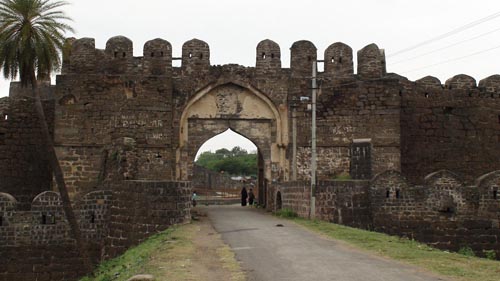Gulbarga Fort

Information on Gulbarga Fort (Gulbarga, Karnataka) - History & Architecture
The Gulbarga Fort is one of the oldest forts located in the state of Karnataka. Constructed roughly during the period of 1300s, the fort is mainly situated in Gulbarga district of the northern region of the state in the Warangal dynasty. However, the fort was significantly restructured and enlarged in the year 1347 by the ruler of the Bahmani Dynasty.
Gulbarga Fort Architecture
The building has a rich architectural heritage owing to its relevance with the Islamic architecture. The infrastructure of the fort was designed in such a manner that it could be protected from the enemy. The fort was constructed with a well-planned canal which was made in and around the canal so that the enemy could not enter the fort easily. The structures that are situated within the fort also has a unique architectural touch. The masjid near to the fort has relevance with the 'Persian architectural style'. Furthermore, the tomb near to the fort has painting in the interior walls that has exceptional combination of the Turkish-Iranian art. The bustling fort is endowed with beautiful courtyards; it also has mosques, temples, towers, ammunitions dumps, stables etc and depicts the importance and architectural splendor of the era that links with Islamic Architecture.
Gulbarga Fort History
The fort has a long history associated with it. After Muhammad bin Tughluq took control over the region of northern Deccan in the early 14th century. However, in mid-1347, the northern Deccan was took over by Hassan Gangu and declared the place of Gulbarga as the capital of the region. During this particular period the fort which was originally built by Raja Gulchand, was restructured and enlarged. With the emergence of the 15th century the fort was again rebuilt by Yusuf Adil especially owing to his prominent financial condition. After India became independent Hyderabad was annexed into a different state but Gulbarga district and the fort remained within the city of Mysore. Build within a total area of 0.5 acres the fort is deemed to be well fortified. The fort is surrounded with a 30 feet wide channel. There prevail altogether 15 towers within the fort with each of those well preserved. The fort also contains an extensive complex which was named after Sufi Saint 'Bande Nawaz'. The walls of the tomb have paintings which show the cultural heritage of the Gulbarga city during that period. It also has a mosque that was constructed by the Mughals just near to the fort. Again, since the river Krishna and Bhima are very close to the fort mostly black soil are found within the fort.
Gulbarga Fort Tourism Importance
Some of the inherent and unique features of the fort make it a potential place of visit for the tourism sector. First of all the Dargah near to the fort is a holy tomb for the Muslim community and thus it will attract the Islam tourist. Furthermore, the Khawaja festival that takes place in the month of November every year is also a potential attraction for the tourism sector. Additionally, the Chandrala Parameshwari Temple which is also located close to the fort is a Buddhist pilgrimage place area. So visitors of the temple can also take a short tour of the fort. The fort can also be accessed easily from various places of the state through rail, air or road transport. The area in and around the fort also presents a mix of several cultures including Hindu, Muslim and Buddha which can be considered as potential attraction of the tourism. Hence, it can be concluded that these features will certainly prove to be important for the tourism.
Well, though the fort is known for its historic architectural feature, but the real fact is that, it is given less importance by the authority and the unauthorized construction coming across the fort, has dimmed its importance.
- Bangalore Monuments
- Bagalkot Monuments
- Belgaum Monuments
- Bellary Monuments
- Bidar Monuments
- Bijapur Monuments
- Chitradurga Monuments
- Coorg Monuments
- Dakshina Kannada Monuments
- Gadag Monuments
- Gulbarga Monuments
- Hassan Monuments
- Mysore Monuments
- Raichur Monuments
- Uttara Kannada Monuments
- Yadgir Monuments
- Andaman Nicobar Monuments
- Andhra Pradesh Monuments
- Assam Monuments
- Bihar Monuments
- Chhattisgarh Monuments
- New Delhi Monuments
- Goa Monuments
- Gujarat Monuments
- Haryana Monuments
- Himachal Pradesh Monuments
- Jammu and Kashmir Monuments
- Karnataka Monuments
- Kerala Monuments
- Madhya Pradesh Monuments
- Maharashtra Monuments
- Odisha Monuments
- Punjab Monuments
- Rajasthan Monuments
- Tamil Nadu Monuments
- Telangana Monuments
- Uttar Pradesh Monuments
- West Bengal Monuments